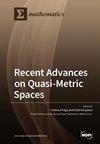修正的 Cox 模型:不同生存分布、删减率和样本量的模拟研究
IF 2.2
3区 数学
Q1 MATHEMATICS
引用次数: 0
摘要
经典 Cox 模型是生存分析中研究右删失数据最常用的方法。然而,它是基于比例危险(PH)的基本假设。当违反 PH 假设时,分层和扩展的修正 Cox 模型被广泛用作解决方案。然而,以前对修正 Cox 模型的比较并没有采用全面的蒙特卡洛模拟来对两种模型进行比较分析。在本文中,我们进行了广泛的蒙特卡洛模拟,比较了分层模型和扩展 Cox 模型在不同删失率、样本量和生存分布下的表现。我们的结果表明,模型在不同剔除率和样本量下的表现对生存时间的分布具有稳健性。因此,它们在 Weibull 生存时间下的表现与指数生存时间下的表现相当。此外,我们还发现,扩展 Cox 模型在各种删失率、样本量和生存时间分布组合下的表现都优于其他模型。本文章由计算机程序翻译,如有差异,请以英文原文为准。
Modified Cox Models: A Simulation Study on Different Survival Distributions, Censoring Rates, and Sample Sizes
The classical Cox model is the most popular procedure for studying right-censored data in survival analysis. However, it is based on the fundamental assumption of proportional hazards (PH). Modified Cox models, stratified and extended, have been widely employed as solutions when the PH assumption is violated. Nevertheless, prior comparisons of the modified Cox models did not employ comprehensive Monte-Carlo simulations to carry out a comparative analysis between the two models. In this paper, we conducted extensive Monte-Carlo simulation to compare the performance of the stratified and extended Cox models under varying censoring rates, sample sizes, and survival distributions. Our results suggest that the models’ performance at varying censoring rates and sample sizes is robust to the distribution of survival times. Thus, their performance under Weibull survival times was comparable to that of exponential survival times. Furthermore, we found that the extended Cox model outperformed other models under every combination of censoring, sample size and survival distribution.
求助全文
通过发布文献求助,成功后即可免费获取论文全文。
去求助
来源期刊

Mathematics
Mathematics-General Mathematics
CiteScore
4.00
自引率
16.70%
发文量
4032
审稿时长
21.9 days
期刊介绍:
Mathematics (ISSN 2227-7390) is an international, open access journal which provides an advanced forum for studies related to mathematical sciences. It devotes exclusively to the publication of high-quality reviews, regular research papers and short communications in all areas of pure and applied mathematics. Mathematics also publishes timely and thorough survey articles on current trends, new theoretical techniques, novel ideas and new mathematical tools in different branches of mathematics.
 求助内容:
求助内容: 应助结果提醒方式:
应助结果提醒方式:


